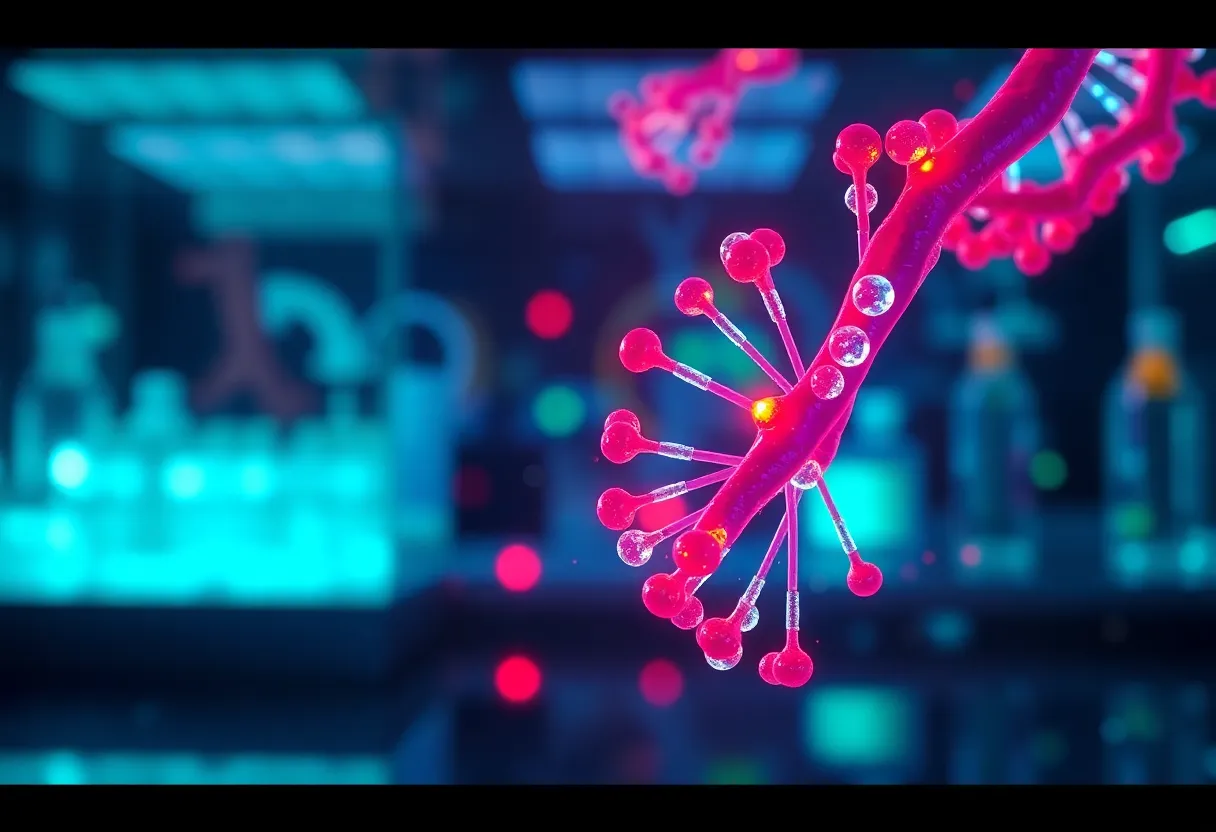News Summary
A nine-month-old boy, KJ Muldoon, has become the first patient to receive successful customized CRISPR gene editing for CPS1 deficiency. This milestone, achieved by a team at Children’s Hospital of Philadelphia and Penn Medicine, marks a significant advancement in personalized medicine for rare genetic disorders. Following the innovative treatment, KJ showed remarkable recovery and developmental progress. The case highlights the promise of CRISPR technology in tailoring therapies for individual patients and could transform the treatment landscape for rare conditions.
Clifton Heights, Pennsylvania – A nine-month-old boy, KJ Muldoon, has become the first patient successfully treated with customized CRISPR gene editing for a rare genetic disorder known as CPS1 deficiency. This significant medical breakthrough was achieved by a dedicated team from Children’s Hospital of Philadelphia (CHOP) and Penn Medicine, with the groundbreaking study published in The New England Journal of Medicine.
CPS1 deficiency is a rare genetic disorder caused by a mutation in a gene responsible for producing an enzyme crucial for liver function. This deficiency leads to the inability to eliminate toxic waste from the body, resulting in the dangerous buildup of ammonia. In patients with urea cycle disorders, such as KJ’s, this ammonia accumulation can lead to brain toxicity, neurological damage, and potentially life-threatening complications.
Following KJ’s diagnosis shortly after birth, doctors presented his parents, Nicole and Kyle Muldoon, with two treatment options: a liver transplant or an experimental CRISPR therapy tailored to their son’s unique genetic mutation. Faced with the pressing concerns regarding their child’s health and prognosis, the Muldoons opted for the CRISPR gene editing treatment.
The innovative CRISPR therapy involves editing out the defective DNA and replacing it with a corrected sequence, specifically designed to target KJ’s genetic variant. The first infusion of the therapy occurred in February 2025, followed by follow-up doses administered in March and April 2025. Medical professionals have reported remarkable improvements in KJ’s condition following the treatment, noting his increased ability to eat normally and recover from common illnesses.
Post-treatment evaluations have indicated that KJ requires less medication than he did prior to receiving the therapy. He has also demonstrated notable developmental progress, including milestones such as rolling over and waving. The medical team involved in KJ’s care expresses optimism that this innovative approach could revolutionize the treatment landscape for rare genetic disorders that currently offer limited options.
Researchers acknowledge the necessity of long-term monitoring of KJ’s response to the CRISPR therapy to fully understand its implications and potential for broader application. While CRISPR technology has been previously utilized in treating other conditions like sickle cell anemia, KJ’s case marks a pioneering instance of the technology being customized for an individual patient’s rare genetic issue.
The methodology underlying the CRISPR treatment has evolved over the years, focusing on a process known as “base editing.” This advanced technique aims to minimize the risk of unintentional genetic changes, enhancing the safety and efficacy of gene editing therapies. KJ’s successful treatment represents a significant step forward in the field of gene therapy, suggesting the potential for scalable and affordable custom gene editing options for patients suffering from various rare disorders.
As the medical community continues to explore the implications of KJ’s successful treatment, there is growing enthusiasm around personalized medicine and its promise for future therapeutic approaches. The advancements witnessed in KJ’s case hold substantial hope for overcoming challenges associated with rare genetic disorders and the development of tailored interventions—moving toward a future where individualized treatment is the norm rather than the exception.
Deeper Dive: News & Info About This Topic
HERE Resources
Philadelphia Zoo Welcomes Hatchlings of Galapagos Tortoises
Additional Resources
- CBS News
- Wikipedia: CRISPR
- NBC News
- Google Search: CRISPR gene editing
- Wall Street Journal
- Google Scholar: CRISPR gene editing therapy
- Axios
- Encyclopedia Britannica: genetic disorders
- Science Alert
- Google News: gene therapy
- The New York Times
- The Washington Post

Author: STAFF HERE PHILADELPHIA WRITER
The PHILADELPHIA STAFF WRITER represents the experienced team at HEREPhiladelphia.com, your go-to source for actionable local news and information in Philadelphia, Philadelphia County, and beyond. Specializing in "news you can use," we cover essential topics like product reviews for personal and business needs, local business directories, politics, real estate trends, neighborhood insights, and state news affecting the area—with deep expertise drawn from years of dedicated reporting and strong community input, including local press releases and business updates. We deliver top reporting on high-value events such as Mummers Parade, Philadelphia Flower Show, and Thanksgiving Day Parade. Our coverage extends to key organizations like the Greater Philadelphia Chamber of Commerce and United Way of Greater Philadelphia, plus leading businesses in telecommunications, food services, and healthcare that power the local economy such as Comcast, Aramark, and Children's Hospital of Philadelphia. As part of the broader HERE network, we provide comprehensive, credible insights into Pennsylvania's dynamic landscape.





